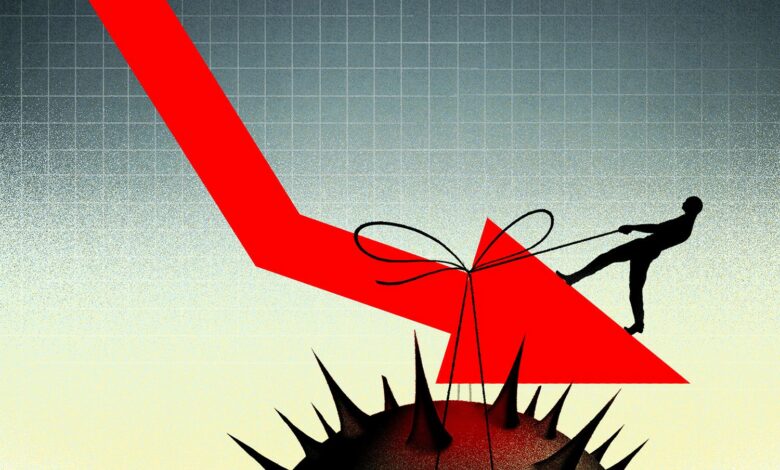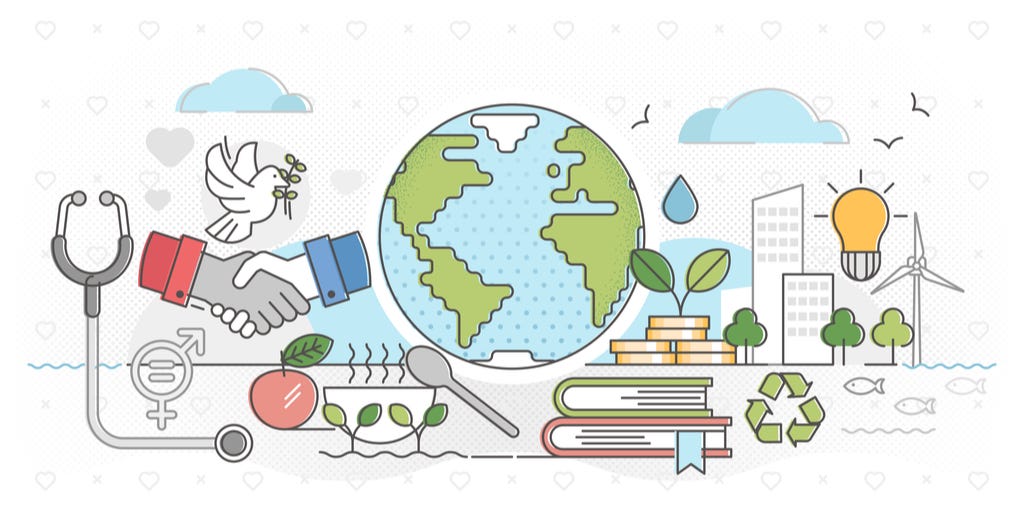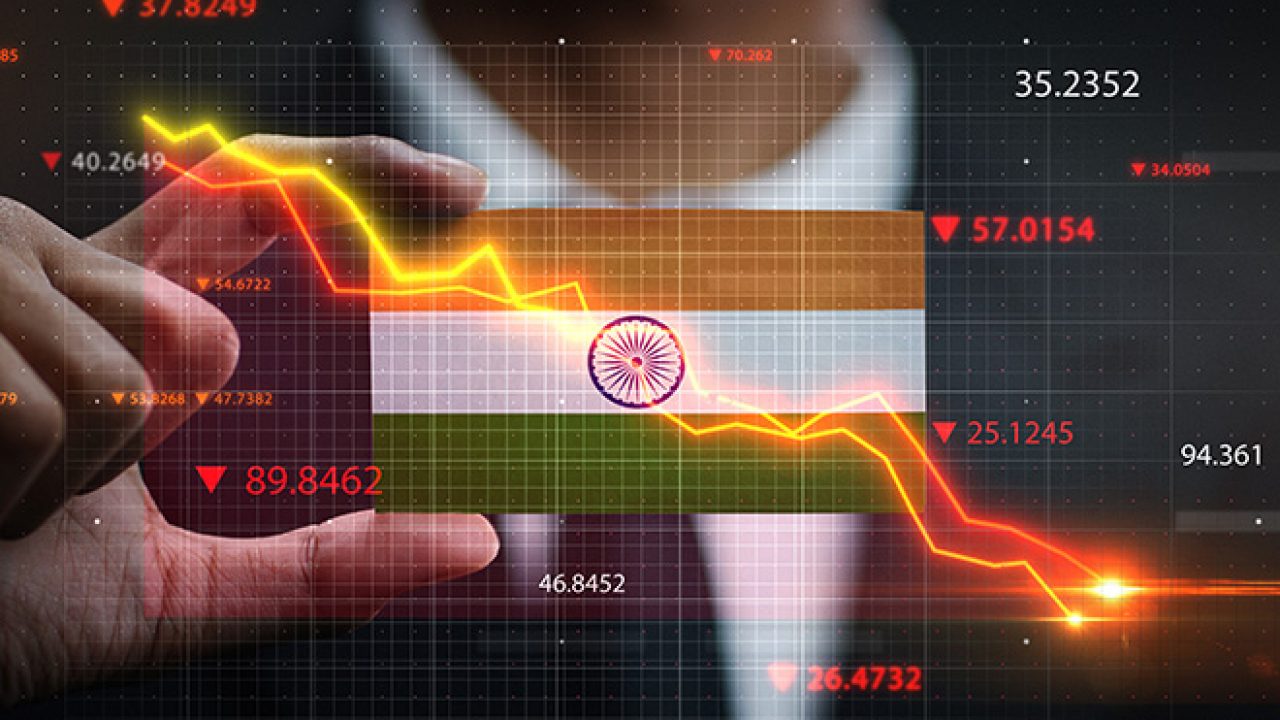Indian economy is on its knees- but who do we blame? : the poor state of GDP post covid-19

Economy is on its knees- but who do we blame?

All the forthcoming economics books are going to write in bold black letters the COVID-19 pandemic for the pace at which it hit the world and the havoc it brought for global economy. But while they do so, they would also cover precedents of how right economics at the right time saved the collapse, somewhere more than the others, step by step at a time. India’s economy, well, it’s not going to be a very inspiring example to follow and we’re all aware of that by now.

The numbers for fiscal year 2020-21 are in and we can’t say we’re too surprised by the negative annual growth of 7.3 percent of GDP at constant prices. But are we disappointed? Definitely. Our country’s economy has leant better by now and there’s no meaning to economics if not learning by what went wrong. And I’m tired of putting the blame of this negative growth on the virus because no, it is not the only one responsible.
Even though the virus did bring unexpected, unprecedented challenges not only in terms of economy, but health, safety and livelihood, but letting the blame slide by from the government’s shoulders would be the pandemic we’re inciting upon ourselves deliberately. After all, it’s the poor that will and have been carry the weight of this slumped economy.
So, let’s talk. Let’s converse about facts and figure out who it is that we need to blame. And just in case you needed a reminder for the economic indicators in 2020, recall the slumped consumption, double digit unemployment rate, high retail inflation and a devastatingly increased income divide.
And add to it as garnishing a thoroughly disappointing vaccination drive and I present to you the economy we’re looking at today.

Everybody in India talked about how consumption slumped as the pandemic hit the country and the lockdown was breaking the country down one step at a time. The government stimulus introduced to apparently stimulate the economy, well, did everything but that.
In case you’re wondering, it is because the fiscal response in the stimulus was at best meagre, when compared to the repercussions of the lockdown on common people. With the broken transmission mechanisms and no actual aid from the government, do you think we have the right to blame declined consumption for it?
The government justified its fiscal response by stating the fact that the pandemic brought along precautionary motives to save from the people and thus, discretionary consumption via fiscal route would not have occurred. They boasted about the underscoring idea, “Do not waste the precious fuel when the brakes are clamped.” But wait, why would you think about saving the fuels with clamped brakes, unclamp the breaks, before it’s too late. At the point when I write this, it is too late.
In retrospect, looking at the government’s direct benefit transfer records, despite limited published data, has brought in criticisms from a lot of notable economists because it left out huge chunks of population from receiving the benefit, ranging from the informal sector like the migrants, and the semi-formal sectors such as construction workers to the lower middle class who generally have a significant contribution in the discretionary consumption percentage of the country.
History has it that the countries with significant cash transfers to their citizens have been able to help mitigate excessive contraction during the lockdown period, case in point- the United States. Inadequacies of the welfare scheme, and inappropriate strategic response in terms of behavior and bias have led to the situation in which we are today, talking about the devastating contraction of the economy.
The unemployment rate rose terribly during the pandemic and all of us common people were witnesses of it. But has India forgotten a term call unemployment benefits? Because the government’s response in the matter is not only inadequate but also disapprovingly meagre. It is no secret that only unemployment can cure unemployment, but long as we don’t have that in place, the country needs a universal and comprehensive social security benefit scheme, in contrast to the current tenuous, lacking and insufficient schemes.

Even during the pandemic when the unemployment rate was high enough to put the working class of the country into tears, the government did not introduce any new significant relief scheme in terms of unemployment insurance benefits. Some alteration were made to the existing schemes but they also came with so many conditions and covered only a small chunk of population that the entire purpose was ultimately overshadowed with the agony of job losses and salary cuts.
State governments did give cash assistance to workers eligible but only 16% of the Rs 31,000 crore unused fund from the BOCW Cess act was put to use. And the only question I can think of right now is- Why? At the time of crisis, underutilization of available funds for a motive is purely irrational, if not stupid.
While the country added a number of new billionaires in the list of world’s richest people in 2020, with some industrialists even doubling their income, the poor and middle class were out dying on the streets, struggling to make ends meet.
The bubble that we’ve created of how rich would cripple the wealth to lower sections has not only blown in our face but also has terribly increased the income divide. To give statistical influence to the aforementioned information, note that 97 percent Indians are poorer post-COVID, as per the statement published by CEO of CMIE, Mahesh Vyas. And the answer to the question, “Is the government going to do anything about it?” still seems a distant one.
And the government’s now four months old vaccination drive surpasses it all. The second wave was a result of an entirely different level of ignorance, xenophobia, bureaucratic incompetence and most importantly- poor planning. So in case you were wondering how India’s crisis turned into a catastrophe, you have the answers to it. It is not enough to say the government has failed its people. They have failed the economy too and we’re all witnesses of it.
And if I’m being entirely honest, the result that came out is not entirely an outlier because the track India was headed on in terms of the economy was not quite different, looking at the past decade record. The fundamentals of the economy that portray the economic health of the country has been on oxygen support for quite some time now, we’re only looking at the aggravated version of it.
India’s four balance sheet problem that has only worsened during the crisis only adds to the list of concerns. And yet, despite all these disappointing facts and figures, the worst part is that it is you, the common man, who is going to suffer the most.
A terrible job market, unstable economy, contracted consumption all lead to sufferings of the eventual victims of every crisis. So while we claim that the virus does not differentiate between the rich and the poor, the resources do, privileges do and opportunities certainly do.




